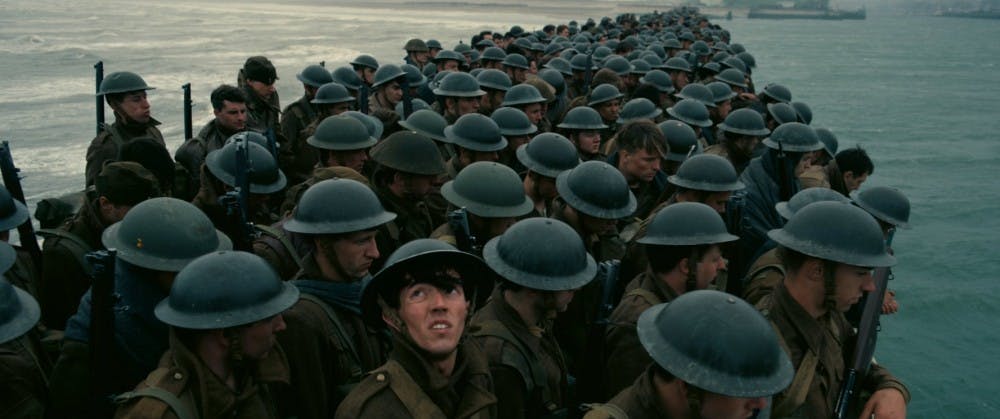By Simon Tessmer
Editor's Note: There Will Be Criticism is a weekly column by Simon Tessmer, a film student at MSU. Tessmer's other reviews can be read on his blog. Check out his last weekly column on "War for the Planet of the Apes" here.

IMDB | Courtesy of Warner Bros. Picture - © 2016 Warner Bros. Entertainment Inc., Village Roadshow Films North America Inc. and RatPac-Dune Entertainment LLC
By Simon Tessmer
Editor's Note: There Will Be Criticism is a weekly column by Simon Tessmer, a film student at MSU. Tessmer's other reviews can be read on his blog. Check out his last weekly column on "War for the Planet of the Apes" here.
"Dunkirk" is bereft of the cinematic qualities I require for immersive escape. It’s a gorgeous, gripping and gritty spectacle, but it lacks interest in personal specifics or character explorations. It’s merely plot mechanics embedded within a stunning work of sight and sound, making "Dunkirk" an achievement in film form rather than an examination of the human condition.
"Dunkirk" tells the story of the Dunkirk evacuation, in which allied WWII soldiers were trapped by Germans in a French harbor, through three overlapping timelines. The first, “The Mole,” follows Tommy (Fionn Whitehead), a British soldier, as he attempts to escape the harbor. The second, “The Sea,” follows Mr. Dawson (Mark Rylance), his son Peter (Tom Glynn-Carney), and his hand George (Barry Keoghan) as they wade into war-torn water on a private vessel. The third, “The Air,” follows Farrier (Tom Hardy) and his squadron of Royal Airforce pilots.
The movie’s strength lies in its visuals. Nolan’s preference for practical effect shows as he beautifully photographs scores of flesh-and-blood extras on the Dunkirk beach. The magnitude of his immense number bodies on screen is ceaselessly breathtaking, as is the thunderous sound of bombing planes screaming overhead (also photographed for the most part practically). "Dunkirk" reveals the raw beauty of the human face in a manner on par to Paul Thomas Anderson’s "The Master (2012)," another WWII film that, like "Dunkirk," was shot on 65mm.
Comparisons with "The Master" stop here, however, as where "The Master" transcendently succeeds in weaving a deeply specific and personal story almost devoid of plot, "Dunkirk" forsakes all character specificity in devotion to plot mechanics. This style bears echoes of classical Soviet filmmaking, such as Sergei Eisenstein’s "Battleship Potemkin (1925)," where distinguishable protagonists were avoided in accordance with collectivist politics. Nolan partially balances out this strategy by using stellar film actors like Tom Hardy and Kenneth Branagh (as Commander Bolton) to thoughtfully embody otherwise functionally simple emotions, but "Dunkirk" nevertheless remains uninvested in the complex interiority of any individual character.
I found this disturbing because it contradicts the filmmaking tradition with which I’m aligned. A positive film experience for me requires identifiable characters with which I can both relate and explore my human experience. Characters are my gateway to cinema’s sensuous escape. In eliminating all character traits extemporaneous to "Dunkirk’s" plot, Nolan has constructed a feature length trailer, a demonstration of technical prowess that remains compelling for its runtime but lacks emotional components essential to my definition of successful movie making.
I can feel my memory of "Dunkirk" fade as I write. Where it succeeds in demonstrating the events of wartime, it fails in making them resonate beyond the walls of a movie theatre. "Dunkirk" proves that it is not enough for a film to be loud and beautiful. Volume and visuals require a relatable emotional core to tangibly tether the experience to everyday life. While being thoughtful with film form is an admirable pursuit, I argue that narrative cinema demands pathos first, and the rest is supplemental.
Rating: 3/5
Support student media! Please consider donating to The State News and help fund the future of journalism.